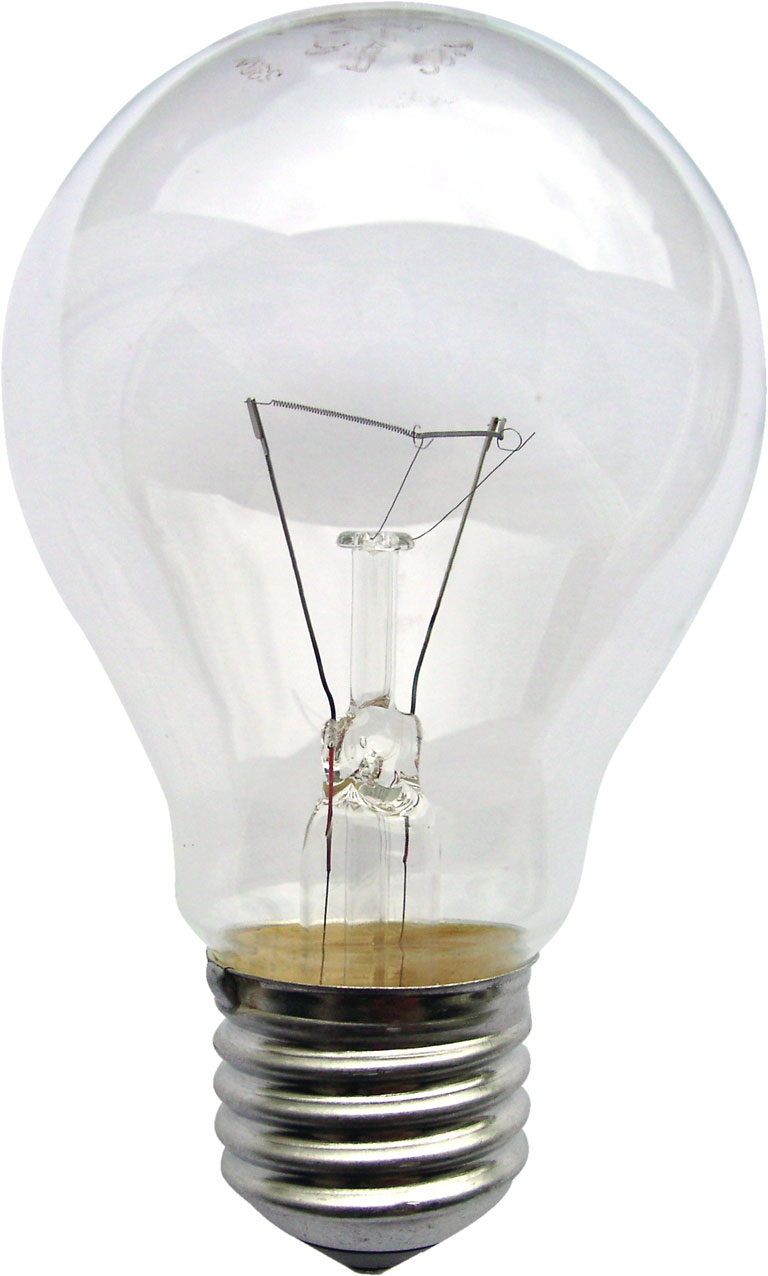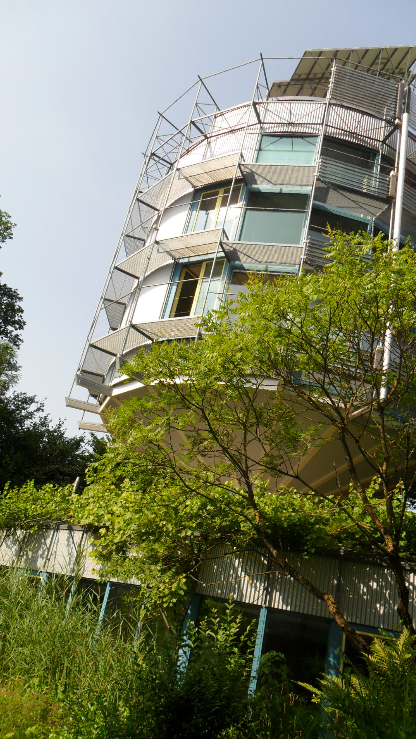|
Daylight Redirecting Film
Daylight redirecting film (DRF) is a thin, flexible plastic film which can be applied to a window to refract or reflect incoming light upwards, so that the deeper parts of the room are lit more evenly. It can be used as a substitute for opaque blinds. It is a form of prism lighting. Function The human eye's response to light is non-linear: halving the light level does not halve the perceived brightness of a space, it makes it look only slightly dimmer. If light is redistributed from the brightest parts of a room to the dimmest, the room therefore appears brighter overall, and more space can be given a useful and comfortable level of illumination (see before and after images from an 1899 article, left). This can reduce the need for artificial lighting. Refraction and total internal reflection inside optical prisms can bend beams of light. This bending of the light allows it to be redistributed. The prism structure only bends light appropriately at certain angles; if the angle ... [...More Info...] [...Related Items...] OR: [Wikipedia] [Google] [Baidu] |
Prism Tile
Prism lighting is the use of prisms to improve the distribution of light in a space. It is usually used to distribute daylight, and is a form of anidolic lighting. Prism lighting was popular from its introduction in the 1890s through to the 1930s, when cheap electric lights were commonplace and prism lighting became unfashionable. While mass production of prism lighting systems ended around 1940, the 2010s have seen a revival using new materials. How it works The human eye's response to light is non-linear: halving the light level does not halve the perceived brightness of a space, it makes it look only slightly dimmer. If light is redistributed from the brightest parts of a room to the dimmest, the room therefore appears brighter overall, and more space can be given a useful and comfortable level of illumination (see before and after images from an 1899 article, below). This can reduce the need for artificial lighting. Refraction and total internal reflection inside optical p ... [...More Info...] [...Related Items...] OR: [Wikipedia] [Google] [Baidu] |
Pressure-sensitive Adhesive
Pressure-sensitive adhesive (PSA, self-adhesive, self-stick adhesive) is a type of nonreactive adhesive which forms a bond when pressure is applied to bond the adhesive with a surface. No solvent, water, or heat is needed to activate the adhesive. It is used in pressure-sensitive tapes, labels, glue dots, stickers, sticky note pads, automobile trim, and a wide variety of other products. As the name "pressure-sensitive" indicates, the degree of bond is influenced by the amount of pressure which is used to apply the adhesive to the surface. Surface factors such as smoothness, surface energy, removal of contaminants, etc. are also important to proper bonding. PSAs are usually designed to form a bond and hold properly at room temperatures. PSAs typically reduce or lose their tack at low temperatures and reduce their shear holding ability at high temperatures; special adhesives are made to function at high or low temperatures. Structural and pressure-sensitive adhesives Adhesives ... [...More Info...] [...Related Items...] OR: [Wikipedia] [Google] [Baidu] |
Energy-saving Lighting
Various governments have passed regulations to phase out manufacturing or importation of incandescent light bulbs for general lighting in favor of more energy- efficient alternatives. The regulations are generally based on efficiency, rather than use of incandescent technology. However, it is not unlawful to continue to buy or sell existing bulbs, which are unregulated. Brazil and Venezuela started the phase-out in 2005, and the European Union, Switzerland, and Australia began to phase them out in 2009. Likewise, other nations are implementing new energy standards or have scheduled phase-outs: Argentina, and Russia in 2012, and Canada,"Canada to ban incandescent light bulbs by 2012" |
Solar Architecture
Solar architecture is an architectural approach that takes in account the Sun to harness clean and renewable solar power. It is related to the fields of optics, thermics, electronics and materials science. Both active and passive solar housing skills are involved in solar architecture. The use of flexible thin-film photovoltaic modules provides fluid integration with steel roofing profiles, enhancing the building's design. Orienting a building to the Sun, selecting materials with favorable thermal mass or light dispersing properties, and designing spaces that naturally circulate air also constitute solar architecture. Initial development of solar architecture has been limited by the rigidity and weight of standard solar power panels. The continued development of photovoltaic (PV) thin film solar has provided a lightweight yet robust vehicle to harness solar energy to reduce a building's impact on the environment. History The idea of passive solar building design first appeare ... [...More Info...] [...Related Items...] OR: [Wikipedia] [Google] [Baidu] |
Prism Lighting
Prism lighting is the use of prisms to improve the distribution of light in a space. It is usually used to distribute daylight, and is a form of anidolic lighting. Prism lighting was popular from its introduction in the 1890s through to the 1930s, when cheap electric lights were commonplace and prism lighting became unfashionable. While mass production of prism lighting systems ended around 1940, the 2010s have seen a revival using new materials. How it works The human eye's response to light is non-linear: halving the light level does not halve the perceived brightness of a space, it makes it look only slightly dimmer. If light is redistributed from the brightest parts of a room to the dimmest, the room therefore appears brighter overall, and more space can be given a useful and comfortable level of illumination (see before and after images from an 1899 article, below). This can reduce the need for artificial lighting. Refraction and total internal reflection inside optical ... [...More Info...] [...Related Items...] OR: [Wikipedia] [Google] [Baidu] |
Transparency And Translucency
In the field of optics, transparency (also called pellucidity or diaphaneity) is the physical property of allowing light to pass through the material without appreciable scattering of light. On a macroscopic scale (one in which the dimensions are much larger than the wavelengths of the photons in question), the photons can be said to follow Snell's law. Translucency (also called translucence or translucidity) allows light to pass through, but does not necessarily (again, on the macroscopic scale) follow Snell's law; the photons can be scattered at either of the two interfaces, or internally, where there is a change in index of refraction. In other words, a translucent material is made up of components with different indices of refraction. A transparent material is made up of components with a uniform index of refraction. Transparent materials appear clear, with the overall appearance of one color, or any combination leading up to a brilliant spectrum of every color. The opposit ... [...More Info...] [...Related Items...] OR: [Wikipedia] [Google] [Baidu] |
Anidolic Lighting
Anidolic lighting systems use anidolic optical components to light rooms. Light redirected by these systems does not converge to a focal point or form an image, hence the name (from ''an'', without, and ''eidolon'', image). Anidolic lighting uses non-imaging mirrors, lenses, and light guides to capture exterior sunlight and direct it deeply into rooms, while also scattering rays to avoid glare. The human eye's response to light is non-linear, so a more even distribution of the same amount of light makes a room appear brighter. It is most challenging to effectively capture and redistribute light on cloudy, overcast days,Scartezzini, p. 14 when the sunlight is diffuse. Optical elements Mirrors are typically parabolic or elliptical mirrors. Lenses are frequently made in multiple sections, like a Fresnel lens. Light guides include light pipes and anidolic ceilings. Lens systems Lens systems use reflection and refraction within optical prisms to redirect daylight. Some forms ... [...More Info...] [...Related Items...] OR: [Wikipedia] [Google] [Baidu] |
Fresnel Lens
A Fresnel lens ( ; ; or ) is a type of composite compact lens developed by the French physicist Augustin-Jean Fresnel (1788–1827) for use in lighthouses. It has been called "the invention that saved a million ships." The design allows the construction of lenses of large aperture and short focal length without the mass and volume of material that would be required by a lens of conventional design. A Fresnel lens can be made much thinner than a comparable conventional lens, in some cases taking the form of a flat sheet. The simpler dioptric (purely refractive) form of the lens was first proposed by Count Buffon and independently reinvented by Fresnel. The ''catadioptric'' form of the lens, entirely invented by Fresnel, has outer elements that use total internal reflection as well as refraction; it can capture more oblique light from a light source and add it to the beam of a lighthouse, making the light visible from greater distances. Description The Fresnel lens redu ... [...More Info...] [...Related Items...] OR: [Wikipedia] [Google] [Baidu] |
Acrylic Resin
186 px, Polyhydroxyethylmethacrylate is a typical acrylate resin. An acrylic resin is a thermoplastic or thermosetting plastic substance typically derived from acrylic acid, methacrylic acid and acrylate monomers such as butyl acrylate and or methacrylate monomers such as methyl methacrylate. Thermoplastic acrylics designate a group of acrylic resins typically containing both a high molecular weight and a high glass transition temperature which exhibit lacquer dry capability. Acrylic resins designed for use in two component systems for crosslinking with isocyanate are referred to as polyols and are made with the monomers previously mentioned as well as hydroxy monomers such as hydroxy ethyl methacrylate. Acrylic resins are produced in different liquid carriers such as a hydrocarbon solvent (solventborne acrylics or solution acrylics solventborne acrylic selector) or water in which case they are referred to as emulsions or dispersions and they are also provided in 100% solids be ... [...More Info...] [...Related Items...] OR: [Wikipedia] [Google] [Baidu] |
Prism Lighting
Prism lighting is the use of prisms to improve the distribution of light in a space. It is usually used to distribute daylight, and is a form of anidolic lighting. Prism lighting was popular from its introduction in the 1890s through to the 1930s, when cheap electric lights were commonplace and prism lighting became unfashionable. While mass production of prism lighting systems ended around 1940, the 2010s have seen a revival using new materials. How it works The human eye's response to light is non-linear: halving the light level does not halve the perceived brightness of a space, it makes it look only slightly dimmer. If light is redistributed from the brightest parts of a room to the dimmest, the room therefore appears brighter overall, and more space can be given a useful and comfortable level of illumination (see before and after images from an 1899 article, below). This can reduce the need for artificial lighting. Refraction and total internal reflection inside optical ... [...More Info...] [...Related Items...] OR: [Wikipedia] [Google] [Baidu] |
Window Film
Window film (tint) is a thin laminate film that can be installed to the interior or exterior of glass surfaces in automobiles and boats and also to the interior or exterior of glass in homes and buildings. It is usually made from polyethylene terephthalate (PET), a thermoplastic polymer resin of the polyester family, due to its clarity, tensile strength, dimensional stability, and ability to accept a variety of surface-applied or embedded treatments. Window films are generically categorised by their construction components (dyed, pigmented, metallized, ceramic or nano), by their intended use (automotive, marine or architectural), by substrate type (glass or polycarbonate), and/or by their technical performance (privacy, solar control, safety and security). Window film is normally installed by professional service companies but there are also DIY kits widely available. The International Window Film Association, founded in 1991, provides unbranded information about window films. ... [...More Info...] [...Related Items...] OR: [Wikipedia] [Google] [Baidu] |
Aspect (geography)
In physical geography and physical geology, aspect (also known as exposure) is the compass direction or azimuth that a terrain surface faces. For example, a slope landform on the eastern edge of the Rockies toward the Great Plains is described as having an ''easterly aspect''. A slope which falls down to a deep valley on its western side and a shallower one on its eastern side has a ''westerly aspect'' or is a ''west-facing slope''. The direction a slope faces can affect the physical and biotic features of the slope, known as a slope effect. The term aspect can also be used to describe a related distinct concept: the horizontal alignment of a coastline. Here, the aspect is the direction which the coastline is facing towards the sea. For example, a coastline with sea to the northeast (as in most of Queensland) has a ''northeasterly aspect''. Aspect is complemented by ''grade'' to characterize the surface gradient. Importance Aspect can have a strong influence on temperatur ... [...More Info...] [...Related Items...] OR: [Wikipedia] [Google] [Baidu] |






